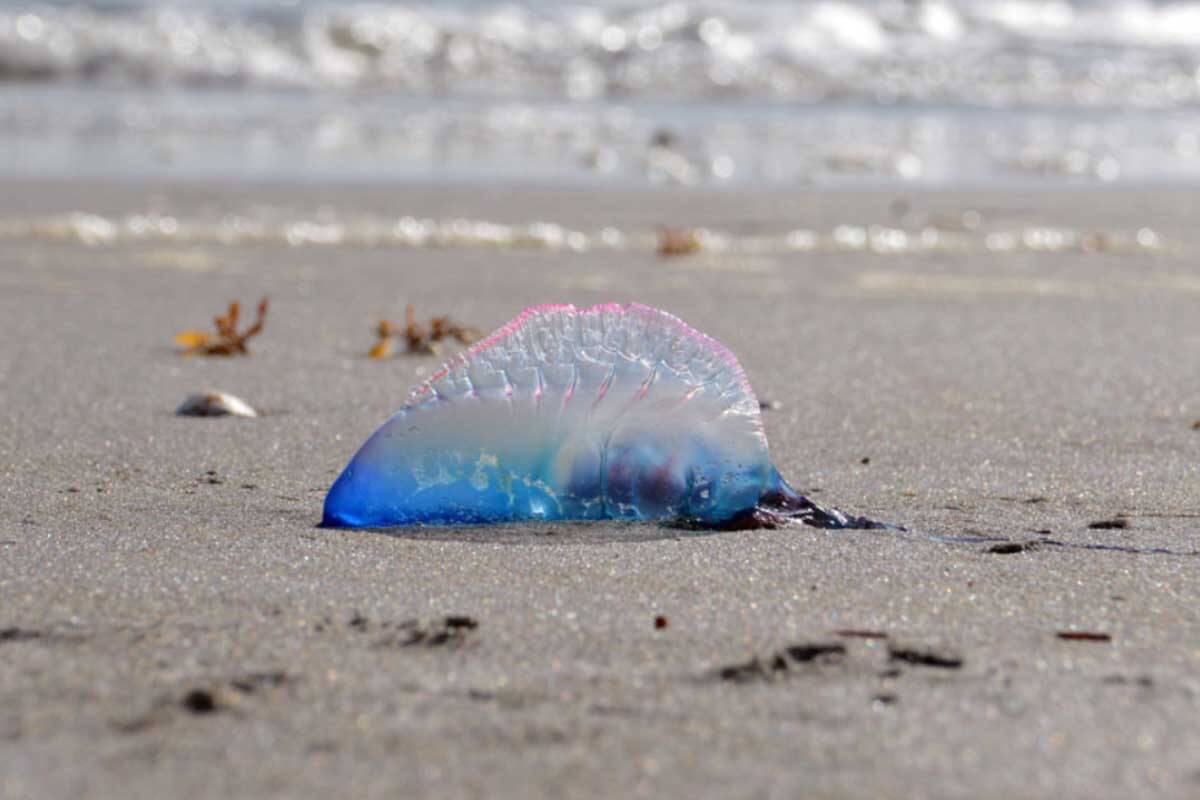
The largest stranding of Portuguese man o’ war (Physalia physalis) since 2012 is occurring on beaches across southwest Britain.
The jellyfish-like creature, which is actually a colony of individual animals known as hydrozoans, that function together as if they were a single entity, is not common to the UK’s waters, however, according to the Marine Conservation Society’s website, this is the second year they have been gathering in numbers, with a large mass stranding event also recorded in 2009.
The man o’ war has been sighted along the north Cornwall and Devon coastlines, with sightings up the western coast as far Pembrokeshire. Perranporth Beach in north Cornwall was closed to the public on 12 September as a result of the number of the creatures being washed ashore, according to the MCS report.
Also known as the bluebottle and – rather disturbingly – the ‘floating terror’, the man o’ war consists of a blue/purple ‘float’ which remains at the surface of the sea, but the stinging tentacles can extend for 10 or more metres below the surface. Depending on the tide and current, these may extend quite some way from the ‘body’. The stings are extremely painful and – in rare cases – have proven to be fatal.
‘It’s the tentacle-like polyps that can give an agonising and potentially lethal sting,’ says Dr Peter Richardson, jellyfish expert at the MCS. ‘Because a stranded Portuguese man o’ war looks a bit like a deflating purple balloon with blue ribbons attached, children will find it fascinating. So, if you’re visiting west coast beaches in the next few weeks it’s well worth making sure you know what these animals look like and that no one picks them up. The stings can be unbelievably painful and in rare cases, fatal. We’d like people to report any sightings of Portuguese man o’ war to our website so we get a better idea of the extent of the strandings.’
Given the length of the tentacles, it’s wise not to approach a stranded man o’ war too closely if you are barefoot or wearing flip-flops, but should you see a man ‘o war at the beach and you have your smartphone or camera handy, you can report your sightings directly to Dr Richardson through the Marine Conservation Society’s jellyfish survey page.
- Conception liveaboard fire captain appeals manslaughter verdict - 5 December 2025
- New global dive-travel platform Scubago set to launch in 2026 - 3 December 2025
- DIVE’s Biggest Shots of 2025 - 1 December 2025


